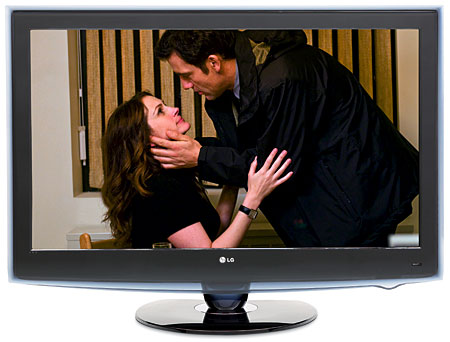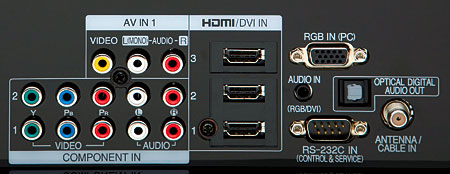LG 47LH90 LCD HDTV
Black Is Back
As you no doubt know by now, LCD HDTVs command the lion’s share of the flat-panel market, outpacing plasma by a wide margin. This is due, at least in part, to the fact that LCDs are generally brighter than plasmas, which draws more attention on the showroom floor. They also consume less power, which makes them the greener choice.

However, LCDs suffer from some significant drawbacks compared with plasmas, such as elevated black levels, motion blur, and off-axis image degradation. Not much can be done about that last one, but the first two are being addressed in higher-end sets with LED backlighting and high refresh rates, respectively.
LG recently entered the LED sweepstakes with the LH90 series, which includes the 47-inch, 1080p 47LH90 reviewed here. How well does it solve the problems that are inherent in LCDs? Let’s find out...
Features
With LED backlighting, the 47LH90 implements a function called local dimming. With local dimming, the LEDs behind dark portions of the image are dimmed, and those behind bright areas are, well, brightened. This works better to increase the perceived contrast than conventional dynamic backlighting, which can only dim and brighten the entire screen as a whole.

To address LCD motion blur, this set increases the frame rate and creates new, interpolated frames between the actual frames in the video signal. Theoretically, the new frames place any moving objects between their positions in the actual frames, which sharpens the appearance of those objects. This process also gives the picture a video-like look, which some of my colleagues object to. For me, it’s a small price to pay for sharper motion detail.
 These days, it’s common to double the frame rate to 120 hertz, where one new frame is interpolated between each actual frame in a 1080p/60 signal. With 1080p/24, four new frames are interpolated between the actual frames. So if 120 Hz is good, 240 Hz must be better, right?
These days, it’s common to double the frame rate to 120 hertz, where one new frame is interpolated between each actual frame in a 1080p/60 signal. With 1080p/24, four new frames are interpolated between the actual frames. So if 120 Hz is good, 240 Hz must be better, right?
Not necessarily. In some 240-Hz sets, the number of interpolated frames is doubled. But in others—such as the 47LH90 and all other LG 240-Hz sets—the number of interpolated frames is the same as those in 120-Hz models. To achieve what many call “pseudo 240 Hz,” the backlight flashes on and off in a particular pattern behind each frame to simulate the effect of true 240 Hz.
The 47LH90 has a picture mode called THX Cinema, which is THX certified to conform to the established standards for gray scale, color gamut, contrast, brightness, etc. It also disables all of the user controls, so you can’t mess with this mode.
One particularly rare and geeky feature that the 47LH90 offers is 10-point gray-scale calibration. Most TVs include two-point calibration, which lets a trained technician adjust the gray scale at high and low brightness levels. Normally this is sufficient to produce a respectable result across the full brightness range, but it often involves some compromises. With a 10-point calibration, techs can adjust 10 different brightness levels independently, which lets them achieve a nearly perfect calibration. ISF Day and ISF Night modes let the tech lock in the settings so they can’t be changed by curious fingers. The settings for one input can also be applied to all inputs at the touch of a button.




























































